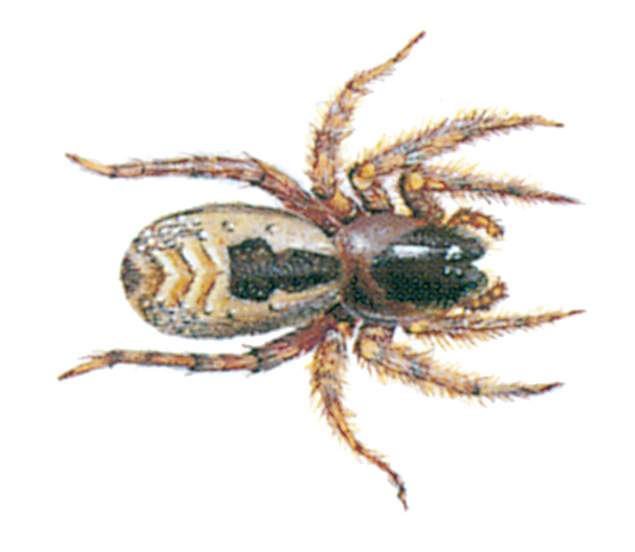
Commonly known as: Lace webbed spider (Latin: Ciciflo fenestralis)
A common spider in cellars and outhouses, on doorframes and walls; the web is sometimes seen stretched across a window pane.
In addition to the normal three pairs of spinnerets, this spider (and many others) has an additional spinning organ, known as the cribellum, which has a large number of pores and has been likened to a sieve.
The silk which emerges from the cribellum is combed out by the calamistrum, a row of small spines, on each of the front legs. This silk has a characteristic bluish appearance. The web is a tangle of threads firmly attached to the substrate.
The prey usually consists of crawling invertebrates. When the net shakes the spider runs out, seizes the insect by a leg and drags it backwards into its retreat.
The eggs are normally laid in June. The female spins a spherical nest chamber in a sheltered place near the web and camouflages the nest with various foreign objects. In this completely enclosed chamber she lays her eggs and remains nearby, guarding them and taking no more food.
In late summer old nests can be found from which the young have disappeared, leaving behind their egg cases and the empty casts from their first moult alongside the dead female




